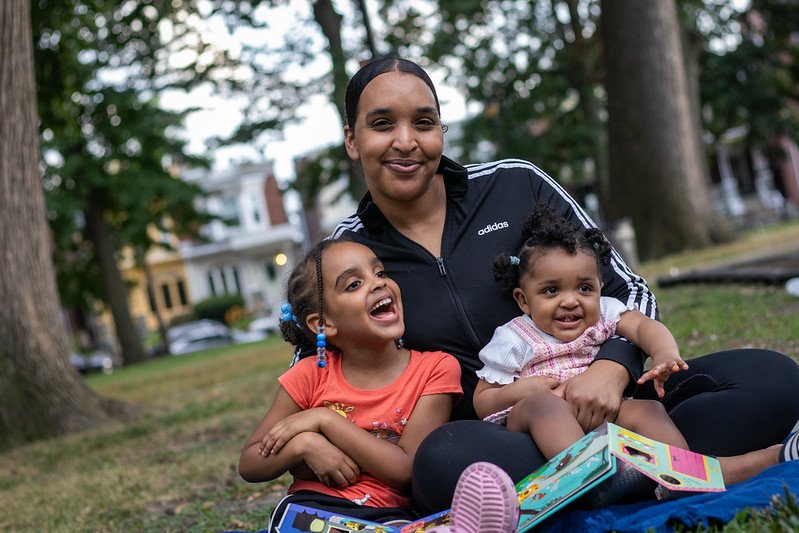Yes, these reading quirks are totally normal!
If you’ve ever sat down to read with your child and thought, “Wait, this can’t be how it’s supposed to go.” — you’re not alone.
Parenting through the early reading years can feel like a mix of pride, frustration, and sometimes even panic. Is it normal for them to chew on the book for this long? What’s with all the guessing? And why, oh why, are we reading this same book for the 87th time?
Reading is a journey, not a race. Some of the things kids do when learning to read might look a little strange, but trust us—many of them are all signs they’re figuring it out. So let’s break down some common "reading quirks" and why they’re totally okay (and even a good sign!).
Reading Quirks That Are Totally Normal:
Chewing on books: For babies and toddlers, books are a sensory experience. Plus, those board books are pretty chewable and made to be flipped by little hands that aren’t as nimble as ours.
Reading in the wrong direction: Whether it’s turning pages backwards or reading right to left, this is all part of understanding how books work for toddlers. Gently guide them, but no need to stress.
Getting frustrated: Groans, tears, or walking away? Yep, learning is hard work! Keep calm and encourage breaks, even in the middle of a story.
Guessing or skipping words: Your child is using the context and problem-solving skills to piece it together! Praise their effort and gently encourage them to slow down and look at the whole word.
Making up stories from pictures: This is a creative way to interact with a book. Lean into it and ask them questions like, “What do you think happens next?
Losing focus quickly: Sitting still is hard! Reading doesn’t have to happen all at once. Break it up and follow their lead.
Re-reading the same line or page: Repetition is how kids master skills. The more they see it, the better they’ll know it.
Mixing up letters or words: Swapping "b" for "d" or "was" for "saw" is super common. Point out the differences and it should sort itself out with practice.
Mixing up letter sounds: English can be tricky! 26 letters, 44 letter sounds, and some letters make more than one sound. If your child gets mixed up, gently correct that sound and ask them to try the word again.
Pointing to words: Using their finger to track is a helpful tool! It’s not “for babies” and can help with focus and reading speed for any age.
Using a singsong voice: Dramatic readings? We’re here for it. It shows they’re connecting to the story’s rhythm and tone.
Moving around while listening: Some kids need to wiggle! Reading doesn’t always look like sitting quietly—and that’s okay.
Asking lots of questions: Curiosity fuels learning. Encourage their questions, even if it pauses the story.
Making up words: If they don’t know a word, they’ll invent one. Applaud their effort to keep going.
Reading the same book over and over: Repetition builds confidence and joy. They’re getting comfortable with familiar words and patterns.

What You Can Do to Help:
Celebrate effort: Praise your child for trying, not just for getting it right.
Keep reading fun: Use silly voices, let them choose the book, ask questions, point out new words, and make it a no-pressure experience.
Don’t give them all of the answers. If your child gets a word wrong, don’t jump in with the right word—coach them to sound it out instead.
Ask for help: If you’re ever unsure or think your child might be experiencing a delay, reach out to your child’s teacher for guidance.
Learning to read is one of the biggest milestones in a child’s life—and it’s messy, wonderful, and unique for every kid. So next time you catch your little one "reading" backwards or turning storytime into a play session, take a deep breath and remember:
This is reading. They’re on their way and you’re doing great!
Philadelphia once had nearly 200 school librarians, now it has two. This is how the city lost them and how we can bring them back.
In a night of celebration and action, Read by 4th partners came together to fight for every child’s right to read.
From struggling reader to community leader, Jazmine is making sure more children have the support they need to thrive.
We can’t talk about the early literacy crisis without being real about something else: the adult literacy crisis.
Here are 5 ways you can support Philly's young readers this National Literacy Month.
Self-care isn't just wellness, it’s the foundation of sustainable healthy advocacy. Caring for ourselves helps us better care for others.
Want to rally for Philly’s young readers? Download our free posters and help push for policies that fuel early literacy success.
Your voices are shaping the future of Philly’s early literacy movement.
Chalk isn’t just for doodles. It’s a fun way to build reading skills all summer long!
Moffet School is rewriting the script on reading with structured literacy, family engagement, and a whole-child approach.
Reading Captains, you’ve got the trust, the heart, and the know-how. Here are a few simple, powerful ways to spread a love of literacy.
Literacy is a right, but it hasn’t always been protected. Check out this Lunch & Learn exploring the history of Black literacy in America and the lessons we can carry into our present and future.
Use these reflection questions as a strategic tool to help bring our shared values off to life.
The literacy world is packed with big, fancy words—but we’re not about that. Here’s a no-fluff guide to the key terms that matter to Philly’s early literacy movement.
How are our children being taught to read? We spoke with District leaders to find out.
Chewing on books? Reading backward? Obsessed with one story? These quirky reading habits might seem strange, but they’re actually signs your child is learning.
We partnered with Fors Marsh to evaluate how our community literacy grant model, influenced by participatory and trust-based philanthropy, is working.
Recognized as one of 2024’s most impactful initiatives, the Philly ABCs transforms public spaces into playful, culturally relevant, learning experiences for families.
A champion for education and equity, Julia Cadwallender steps into her new role with a passion for the science of reading, community, and collaboration.
These eye-opening documentaries expose why so many kids struggle with reading—and will leave you fired up and ready to take action.
Through storytelling workshops, young voices crafted a tale that will forever be a part of their rec center.
With $81,040 awarded to 44 projects, the Neighborhood Literacy Fund is powering community-driven literacy solutions.
Philly Book Wish offers up to $5,000 in diverse children’s books to inspire our city’s young readers. Apply today!
Reading Captain and dedicated mom, Andrea Blassingame has joined the front lines of the fight for fair school funding. And urges others to do the same.
These proposed policies directly support early literacy education. You can help turn them into law.
Discover new music that makes learning fun, all while building essential early literacy skills.
Teaching word reading with high-dosage synthetic phonics tutoring
Research, classroom strategies, workshops, and more to support you as you teach the next generation of readers.






























